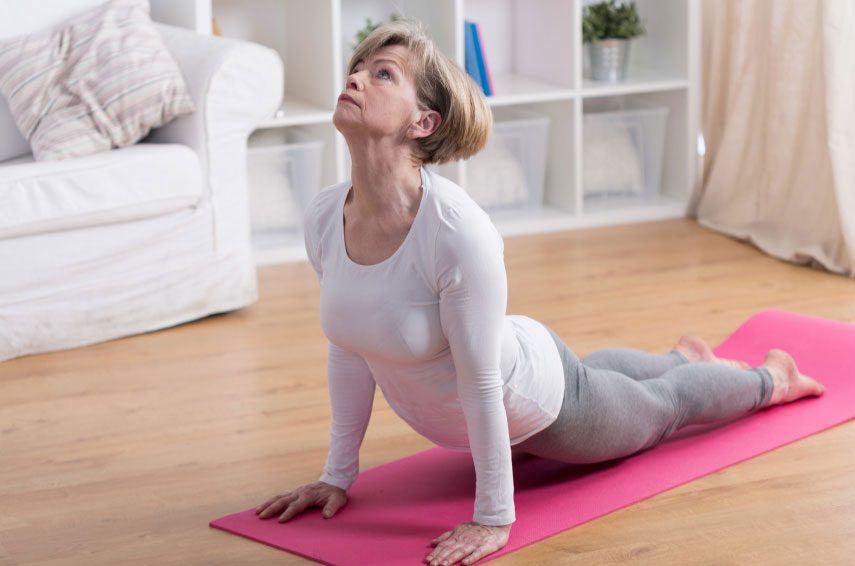How Exercise Affects Your Hormone Balance
May 6, 2024

We all know how important exercise is good for health in general but you may not realize how it can affect your hormone balance. Exercise is a great leveler as it can reduce excess hormones and bring hormones back into balance. Some of the hormones that can be affected by exercise include estrogen, testosterone, cortisol and human growth hormone. Here’s a look at how exercise can affect levels of key hormones and the best types of workouts to get the benefits.
Exercise and Estrogen
This is one hormone that women are sure to have some familiarity with given that it’s a female sex hormone. Estrogen is also produced in men through an enzyme that turns testosterone into estradiol. Men need some estrogen for a healthy sex drive but too much estrogen can go hand in hand with low testosterone.
For women, estrogen is important for healthy bones and cholesterol in particular. It’s a fine balance though as too much estrogen raises the risk of breast cancer. Experts estimate that by the age of 35, a lot of women are in “estrogen dominance” due to the amount of estrogen they have. And that’s a big problem given that lots of things can potentially increase your estrogen levels, including contraceptive pills and pesticides in foods. Scary stuff, right?
There is some good news though: exercise can make estrogen levels more stable and balance out the effects of excess estrogen. This can cut the risk of breast cancer and give you great peace of mind for the future.
Does it matter what type of exercise you do? According to studies, high intensity exercise showed more potential for balancing out estrogen levels but physical activity in general has been shown to have positive effects.
Exercise and Testosterone
Testosterone is technically a male sex hormone but women have a bit of it too. It’s important for lean muscle mass and helping muscles to recover quicker after exercise. Low testosterone in women can have similar effects to low testosterone in men, although what’s classed as “low” obviously differs!
Exercise can boost testosterone levels, which can play a role in everything from libido to having more muscle mass and less belly fat. Experts suggest that it only takes around 20 minutes of physical activity to increase testosterone levels for women.
Exercise and Human Growth Hormone
If you’re not familiar with Human Growth Hormone (HGH), it has a big role to play in the turnover of collagen, muscle and bone, and it’s also involved in healthy metabolism.
Your body produces some Human Growth Hormone while you sleep but exercise is also well known to boost levels. Not all exercise is equal though and only certain types have been shown to affect levels of Human Growth Hormone. Your best bets? According to studies, high intensity exercise and resistance training can build on this. High Intensity Interval Training (HIIT) may also be a good choice given the intensity of the average interval but you’re best to combine it with strength training if you’re serious about boosting HGH.
Exercise and Cortisol
Cortisol is a stress hormone and dictates how our bodies respond to stress. To some degree, we need cortisol to help to repair exercise related muscle damage and encourage your muscles to bounce more quickly after working out.
It’s not all good news though. Having high cortisol levels most of the time makes you more likely to store fat, especially belly fat.
When you work out, your body’s cortisol levels rise. This is a given and there’s not much you can do about it. That said, some types of exercise are more likely to raise cortisol levels than others.
Low intensity exercise can reduce cortisol levels and keep them at stable levels whereas reasonably high intensity exercise has been shown to increase cortisol levels. Endurance training is one of the types of exercise that can significantly raise cortisol levels, especially when it’s intense.
Exercise and Insulin
Regular exercise can help to improve insulin resistance. High Intensity Interval Training (HIIT) is a good choice for this, according to studies, but it’s not quite as straightforward as this given that HIIT also increases cortisol levels too. How much it raises cortisol levels can depend on factors such as how long you rest in between intervals and whether you recover well between HIIT sessions.
Moderate exercise can be a great way to keep your hormone levels healthy, especially when it’s combined with a good diet, plenty of sleep and a healthy lifestyle in general. Don’t be tempted to overdo it. One word of caution when it comes to all of these hormones: over exercising can throw everything out of whack – especially if you do it more often than not. Brittle bones and fertility issues are just a couple of the things that can start to develop as a result of this.
A free Resource
Grab The Healthy Hormone Guide
Are you ready to take back control of your health and menopause symptoms? Then sign up here to receive my FREE Ebook The Healthy Hormone Guide and start your journey back to VIBRANT HEALTH!
Sign Up to Download
Thank you!
You have successfully joined our subscriber list.
Leave a Reply Cancel reply
Information
Work With Me
Resources
Terms & Conditions
Contact Me
Privacy Policy
Quantum Leap Programme
Menopause Programme
Menopause Membership
Energy Codes
About Catherine
Healthy Hormone Guide
Shop My Favourites
Catherine Carrington
specializes in Energy
Healing, Life Coaching, Naturopathy & Homeopathic medicine to help you
live your Best Life.
© 2024 Catherine Carrington | Website Design by: Jules Design
Continuum Membership